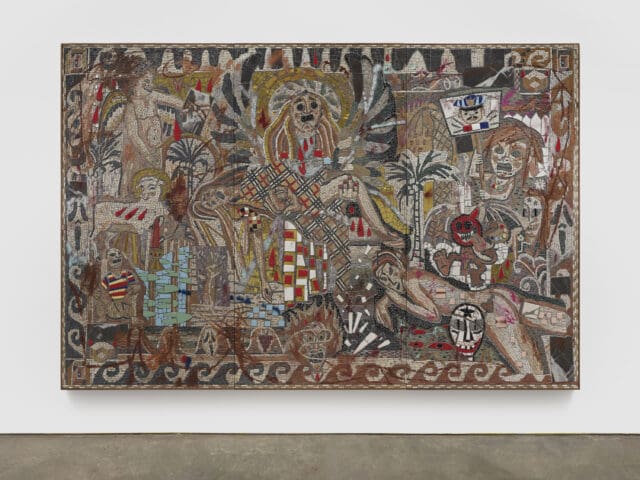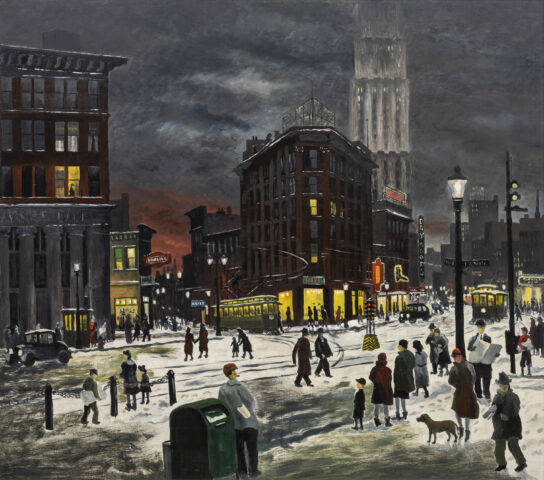A Growing Conversation: Artworks From Our Collection
The Haslinger Family Foundation Galleries
Ongoing
The Haslinger Family Foundation Galleries feature artworks selected from the Museum’s collection of over 7000 objects. The works are arranged by theme, rather than by historical period, resulting in new, unexpected, and exciting connections. Recently, these galleries have been reinstalled under the title A Growing Conversation: Artworks from Our Collection— a truly fitting description. Contemporary art is always expanding, and the Museum’s collection is always growing with it. This new presentation draws inspiration from a variety of recent acquisitions, and a small number of loans from outside the collection are also on view, helping to enrich the groupings.
The Akron Art Museum’s collection includes works of art created between 1850 and the present. This timeframe spans the “modern” and “contemporary” periods of art history, so named because during this era artists have faced rapid changes in technology, politics, social structure, global interconnection, and more. Creative people have responded with equal swiftness, expanding what art can be, what it can mean, and whose creativity should be valued. The conversations offered by artists and artworks are never complete, but instead remain ongoing, urgent, and energetic.
Here are the specific themes currently represented in the Haslinger Galleries:
The Otherworldly and The Fantastic
The atrocities of World War I and its abysmal aftermath intensified the desire for many artists working in the early-twentieth century to create works inspired by psychology, fantasy, science fiction, and spirituality. Since then, artists have remained motivated to produce art grounded in these particular themes and areas of thought. The artworks in this gallery exemplify this, conveying meaning through fantastic imagery or subject matter.
Realism
Artists can find subject matter for their work simply by looking at the people, places, and things around them. However, as the works in this gallery demonstrate, there are many different ways to show reality—some artists produce dense and intricate detail, while others freely explore imaginative styles.
Materials and Meaning
An artist cannot make a painting without paint or a sculpture without a substance to sculpt, so works of art have always been affected by their materials. Since the early twentieth century, however, artists like those featured in this gallery have placed a special focus on materials not just as tools, but as sources of meaning. By thoughtfully selecting meaningful materials that have their own histories, functions, and cultural resonances, artists connect to the world in new ways.
Images of Blackness
During the 1920s, the growing population of Black artists and creative thinkers in Harlem, New York, prompted a Black Pride movement that motivated countless artists in New York and across the United States to illustrate the hardships and joys of Black Americans. Over the course of 100 years, artists have continued to develop this subject matter and, in the process, have inspired younger generations to challenge the fundamental disparities of Black representation. In this gallery you’ll find examples of both, demonstrating the subtle yet various degrees of the Black experience.
The Natural World
Nature can be beautiful, overwhelming, nurturing, dangerous, and more. For perhaps as long as art has existed, artists have hoped to capture these qualities in their work. Many have also sought to examine the ever-changing relationship between humans and the natural world. Each in their own way, the artists featured in this gallery extend and expand these traditions.
Abstraction
When art does not show anything recognizable and instead is composed of pure shapes and colors, it is called abstract. That label applies to each work of art in this gallery. Artists have often pursued abstraction as a way to immediately communicate their feelings and experiences, or other concepts that cannot be represented directly by images. Through abstraction, artists have also explored the materials, processes, and tools of art-making, and the experience of viewing artwork.






